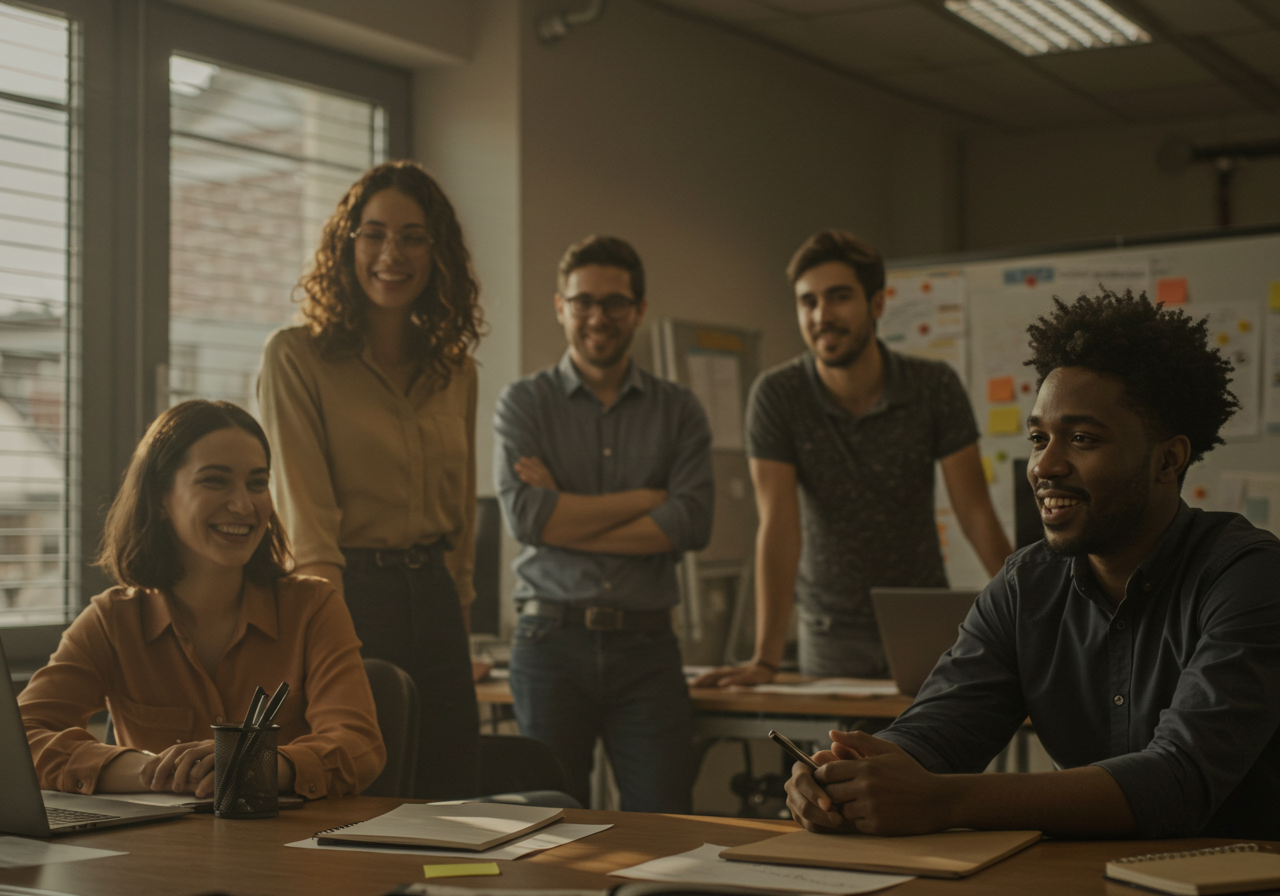In today’s rapidly evolving business landscape, the transportation and logistics industry stands at the crossroads of innovation and opportunity. As executives in this dynamic sector, it’s imperative to recognize the transformative potential of new technologies in driving key performance metrics to new heights. In this article, we delve into the ways cutting-edge technologies can be applied to enhance crucial metrics such as revenue per shipment, tonnage, weight per shipment and revenue per hundredweight, propelling your business toward unprecedented success.
Intelligent Route Optimization: Streamlining Revenue Per Shipment
In the pursuit of higher revenue per shipment, intelligent route optimization has emerged as a game-changer. Leveraging real-time data analytics and advanced algorithms, companies can optimize delivery routes, ensuring minimal detours, reduced fuel consumption and faster delivery times. This not only boosts customer satisfaction but also allows for increased shipments within the same time frame, thereby elevating revenue per shipment. Furthermore, the implementation of artificial intelligence (AI) and machine learning (ML) can fine-tune these algorithms over time, adapting to changing traffic patterns and customer preferences.
Data-Driven Demand Forecasting: Amplifying Tonnage
A cornerstone of success in the transportation and logistics industry is accurate demand forecasting. By harnessing the power of big data and predictive analytics, companies can anticipate demand fluctuations with precision. This empowers executives to optimize inventory management, allocate resources effectively and proactively adapt their operations to varying demand levels. The result? Increased tonnage as operations are aligned with market demand, leading to enhanced efficiency and profitability.
Automated Loading Systems: Enhancing Weight per Shipment
Efficiency in loading and unloading processes is crucial for maximizing weight per shipment. Embracing automated loading systems equipped with robotics and sensors not only expedites these processes but also ensures optimal weight distribution within vehicles. This minimizes the risk of damage during transit and avoids potential overloading fines, thus safeguarding the integrity of shipments while increasing weight per shipment. Additionally, automation reduces labor costs and human errors, further contributing to improved operational metrics.
IoT-enabled Asset Tracking: Elevating Revenue per Hundredweight (Yield)
Real-time visibility into the movement and condition of goods is a game-changer in enhancing revenue per hundredweight. IoT-enabled sensors can provide continuous updates on temperature, humidity, shock and location, ensuring cargo remains intact and secure throughout the journey. Such visibility enables businesses to offer premium services like temperature-sensitive transport or expedited deliveries at a premium price, boosting revenue per hundredweight. Moreover, this transparency fosters customer trust, leading to long-term partnerships and repeat business.
Blockchain-backed Supply Chain Transparency: Optimizing All Metrics
Blockchain technology holds immense promise in revolutionizing the transportation and logistics industry. Its decentralized and immutable nature ensures transparent and secure record-keeping throughout the supply chain. This transparency minimizes disputes, reduces fraud and enhances compliance with regulations. By optimizing supply chain operations through blockchain, companies can streamline processes, mitigate delays and improve overall operational efficiency. This optimization has a cascading effect on revenue per shipment, tonnage, weight per shipment and revenue per hundredweight, resulting in holistic growth.
Predictive Maintenance with AI: Aiding All Key Metrics
In the pursuit of heightened metrics across the board, the role of predictive maintenance cannot be understated. By leveraging AI algorithms and sensor data, companies can predict when maintenance is needed for their vehicles and equipment. This prevents unexpected breakdowns, reduces downtime and maintains a consistent level of service. As a result, revenue per shipment, tonnage, weight per shipment and revenue per hundredweight remain consistent and even witness improvements as operational disruptions are minimized.
Collaborative Platforms and Digital Marketplaces: A Holistic Approach
Modern technology has given rise to collaborative platforms and digital marketplaces that connect shippers, carriers and other stakeholders. These platforms facilitate efficient matching of available capacity with demand, reducing empty miles and optimizing asset utilization. Through such platforms, companies can access a wider network of partners, negotiate competitive rates and optimize their operations, ultimately impacting all key metrics positively.
Case Example – Network and Load Planning for Large US-Based Logistics Company
A large global logistics and package delivery company delivers more than 15 million packages a day through a complex network of trucks, flights, warehouses and personnel. The required forecasting and planning process had previously been done using spreadsheets, phone calls and multiple disparate planning tools. This became difficult to scale and introduced many inefficiencies into the process.
The company engaged Sparq, a leading software engineering consultancy, to help develop a solution to enable network modelers to forecast and plan the most optimal loads on a daily basis while also providing a rolling 18 month forecast. The system is used by 200+ users globally, across many divisions and departments. The resulting efficiency improvements resulted in annual savings of more than $200M.
In conclusion, the transportation and logistics industry is poised for a technological revolution that promises to elevate key metrics like revenue per shipment, tonnage, weight per shipment and revenue per hundredweight. By embracing intelligent route optimization, data-driven demand forecasting, automated loading systems, IoT-enabled asset tracking, blockchain-backed supply chain transparency, predictive maintenance with AI and collaborative platforms, companies can transform their operations and achieve unprecedented success.
As executives, it’s paramount to recognize that the convergence of technology and logistics isn’t a choice but a necessity to remain competitive in a fast-paced global market. Those who lead the charge in adopting these innovations stand to reap substantial rewards, setting new industry benchmarks and propelling their organizations toward sustainable growth and prosperity. The future of transportation and logistics is here, and it’s fueled by the limitless possibilities of new technologies.

Snowflake Summit 2025 Announcements
Snowflake Summit 2025’s latest announcements made it clear: the path to genuine AI-driven impact hinges on frictionless access to data, the ability to act on it with clarity, and absolute confidence in its protection. Learn more about how they're making that happen for customers in this article.

How ChatPRD Helps Build Better Stories (and a Stronger Team)
When user stories are vague, it slows down delivery, trust, and momentum. This article by Senior Product Strategy Consultant Traci Metzger shows how she used a lightweight, AI-guided system (ChatPRD) to write clearer, developer-ready requirements that actually accelerated execution.

QA in the Age of AI: The Rise of AI-Powered Quality Intelligence
As organizations push code to production faster, respond rapidly to new customer needs and build adaptive systems, the expectations on quality have changed. It's no longer enough to simply catch bugs at the end of the cycle. We’re entering an era where quality engineering must evolve into quality intelligence and organizations adopting quality intelligence practices are reporting measurable gains across key delivery metrics. Learn more in this article by Principal Engineer Jarius Hayes.

Operational Efficiency in the AI Era: What Matters and What Works
Ever wonder how leading teams are cutting costs without cutting corners? Hint: it starts with AI. In this article by Principal Delivery Manager Kabir Chugh, learn how AI is powering smarter ops, faster deployments, and measurable savings across industries.
